Numerical Improvement Using Flow and Heat Transfer Calculations of the Zigzag Geometry for Carbon Dioxide PCHEs
Abstract
:1. Introduction
2. Numerical Methodology
2.1. Physical Model
2.2. Grid Independence Verification
2.3. Boundary Conditions and Solution Methods
2.4. Model Validation
2.5. Data Processing
3. Results and Discussion
3.1. Effect of Inserting Straight Sections at Zigzag Corners in Z-Shaped Channels
3.2. Effect of Inserting Arc Segments at Zigzag Corners in Z-Shaped Channels
3.3. Evaluation of the Comprehensive Performance of PCHEs
4. Conclusions
- (1)
- With the increase of mass flow rate, the heat transfer performance of PCHEs with different structures is enhanced, and the pressure drop increases.
- (2)
- Under the same mass flow rate, the pressure drop and convective heat transfer coefficient values of the PCHE inserted straight sections are smaller than those of the conventional Z-shaped channel PCHE. As the offset distance of the inserted straight sections increases, the pressure drop of the PCHE decreases, and the heat transfer performance decreases at the same time.
- (3)
- Under the same mass flow rate, the trend of pressure drop and convective heat transfer coefficient of the PCHE inserted arc segments is similar to the PCHE inserted straight sections’. However, the values of pressure drop and convective heat transfer coefficient are higher than those of the PCHE inserted straight sections when the value of the curvature radius is equal to that of the offset distance.
- (4)
- The comprehensive performance of the optimized PCHE models is better than that of the conventional Z-shaped channel PCHE. When the offset distance is 4 mm or the curvature radius is 4 mm, the PCHE inserted straight sections or arc segments has the best comprehensive performance in this research, respectively. Considering the operating cost and the manufacturing cost, it is found that the PCHE with 4 mm arc segments has better economy than the PCHE with 4 mm straight sections.
- (5)
- In this article, the optimization is only carried out under a specific channel diameter and a specific bend angle. Later studies can be carried out in more structures and a wider range of mass flow rates to discover more general laws.
Author Contributions
Funding
Institutional Review Board Statement
Informed Consent Statement
Data Availability Statement
Conflicts of Interest
Nomenclature
| Symbols | |
| A | the pipe wall surface area of fluid flows, m2 |
| Cp | specific heat capacity, J/(kg K) |
| Dh | hydraulic diameter, m |
| f | Fanning friction factor |
| convective heat transfer coefficient, W/(m2 K) | |
| H | height of the solid domain, mm |
| L | offset distances of inserted straight sections, mm |
| Lf | the flow path length of the fluid, m |
| Ls | the single pitch length, mm |
| Lz | the total length of the PCHE, m |
| Nu | Nusselt number |
| ΔPf | the pressure drop of the channel, Pa |
| q | average heat flux, W/m2 |
| R | the radius of channel, mm |
| Ra | curvature radii of inserted arc segments, mm |
| tp | the spacing of the hot and cold channels, mm |
| Tb | average temperature of the fluid, K |
| Tw | wall temperature, K |
| u | the average velocity of effective section in channel, m/s |
| V | the volume of the fluid channel, m3 |
| W | width of the solid domain, mm |
| Greek symbols | |
| α | channel bend angle, ° |
| λ | average thermal conductivity of the fluid, W/(m K) |
| μ | dynamic viscosity of fluid, Pa·s |
| ρ | average density of the fluid, kg/m3 |
| ζ | comprehensive evaluation factor |
| Subscript | |
| ref | the conventional Z-shaped channel PCHE |
References
- Nikitin, K.; Kato, Y.; Ngo, L. Printed circuit heat exchanger thermal-hydraulic performance in supercritical CO2 experimental loop. Int. J. Refrig. 2006, 29, 807–814. [Google Scholar] [CrossRef]
- Aneesh, A.M.; Sharma, A.; Srivastava, A.; Vyas, K.N.; Chaudhuri, P. Thermal-hydraulic characteristics and performance of 3D straight channel based printed circuit heat exchanger. Appl. Therm. Eng. 2016, 98, 474–482. [Google Scholar] [CrossRef]
- Jeon, S.; Baik, Y.J.; Byon, C.; Kim, W. Thermal performance of heterogeneous PCHE for supercritical CO2 energy cycle. Int. J. Heat Mass Transf. 2016, 102, 867–876. [Google Scholar] [CrossRef]
- Kim, I.H.; No, H.C. Physical model development and optimal design of PCHE for intermediate heat exchangers in HTGRs. Nucl. Eng. Des. 2012, 243, 243–250. [Google Scholar] [CrossRef]
- Gao, Y.C.; Xia, W.K.; Long, Y.; Dai, Y.P. Study on the effects of channel width and fin angle on heat transfer and pressure drop of zigzag PCHE. J. Eng. Therm. Energy Power 2019, 34, 94–100. [Google Scholar]
- Lin, Y.S.; Jing, Q.; Xie, Y.H. Numerical investigation on thermal performance and flow characteristics of Z and S shape printed circuit heat exchanger using S-CO2. Therm. Sci. 2019, 23, 757–764. [Google Scholar] [CrossRef] [Green Version]
- Lee, S.M.; Kim, K.Y. A parametric study of the thermal-hydraulic performance of a Zigzag printed circuit heat exchanger. Heat Transf. Eng. 2014, 35, 1192–1200. [Google Scholar] [CrossRef]
- Bartel, N.; Chen, M.; Utgikar, V.P.; Sun, X.; Kim, I.H.; Christensen, R.; Sabharwall, P. Comparative analysis of compact heat exchangers for application as the intermediate heat exchanger for advanced nuclear reactors. Ann. Nucl. Energy 2015, 81, 143–149. [Google Scholar] [CrossRef] [Green Version]
- Cheng, K.Y.; Zhou, J.Z.; Zhang, H.Z.; Huai, X.L.; Guo, J.F. Experimental investigation of thermal-hydraulic characteristics of a printed circuit heat exchanger used as a pre-cooler for the supercritical CO2 Brayton cycle. Appl. Therm. Eng. 2020, 171, 115116. [Google Scholar] [CrossRef]
- Ngo, T.L.; Kato, Y.; Nikitin, K.; Tsuzuki, N. New printed circuit heat exchanger with S-shaped fins for hot water supplier. Exp. Therm. Fluid Sci. 2006, 30, 811–819. [Google Scholar] [CrossRef]
- Pidaparti, S.R.; Anderson, M.H.; Ranjan, D. Experimental investigation of thermal-hydraulic performance of discontinuous fin printed circuit heat exchangers for supercritical CO2 power cycles. Exp. Therm. Fluid Sci. 2019, 106, 119–129. [Google Scholar] [CrossRef]
- Tang, L.H.; Cui, L.; Sunden, B. Optimization of fin configurations and layouts in a printed circuit heat exchanger for supercritical liquefied natural gas near the pseudo-critical temperature. Appl. Therm. Eng. 2020, 172, 115131. [Google Scholar] [CrossRef]
- Kim, D.E.; Kim, M.H.; Cha, J.E.; Kim, S.O. Numerical investigation on thermal-hydraulic performance of new printed circuit heat exchanger model. Nucl. Eng. Des. 2008, 238, 3269–3276. [Google Scholar] [CrossRef]
- Zhang, H.Z.; Cheng, K.Y.; Huai, X.L.; Zhou, J.Z.; Guo, J.F. Experimental and numerical study of an 80-kW Zigzag printed circuit heat exchanger for supercritical CO2 Brayton cycle. J. Therm. Sci. 2021, 30, 1289–1301. [Google Scholar] [CrossRef]
- Kim, I.H.; No, H.C.; Lee, J.I.; Jeon, B.G. Thermal hydraulic performance analysis of the printed circuit heat exchanger using a helium test facility and CFD simulations. Nucl. Eng. Des. 2012, 239, 2399–2408. [Google Scholar] [CrossRef]

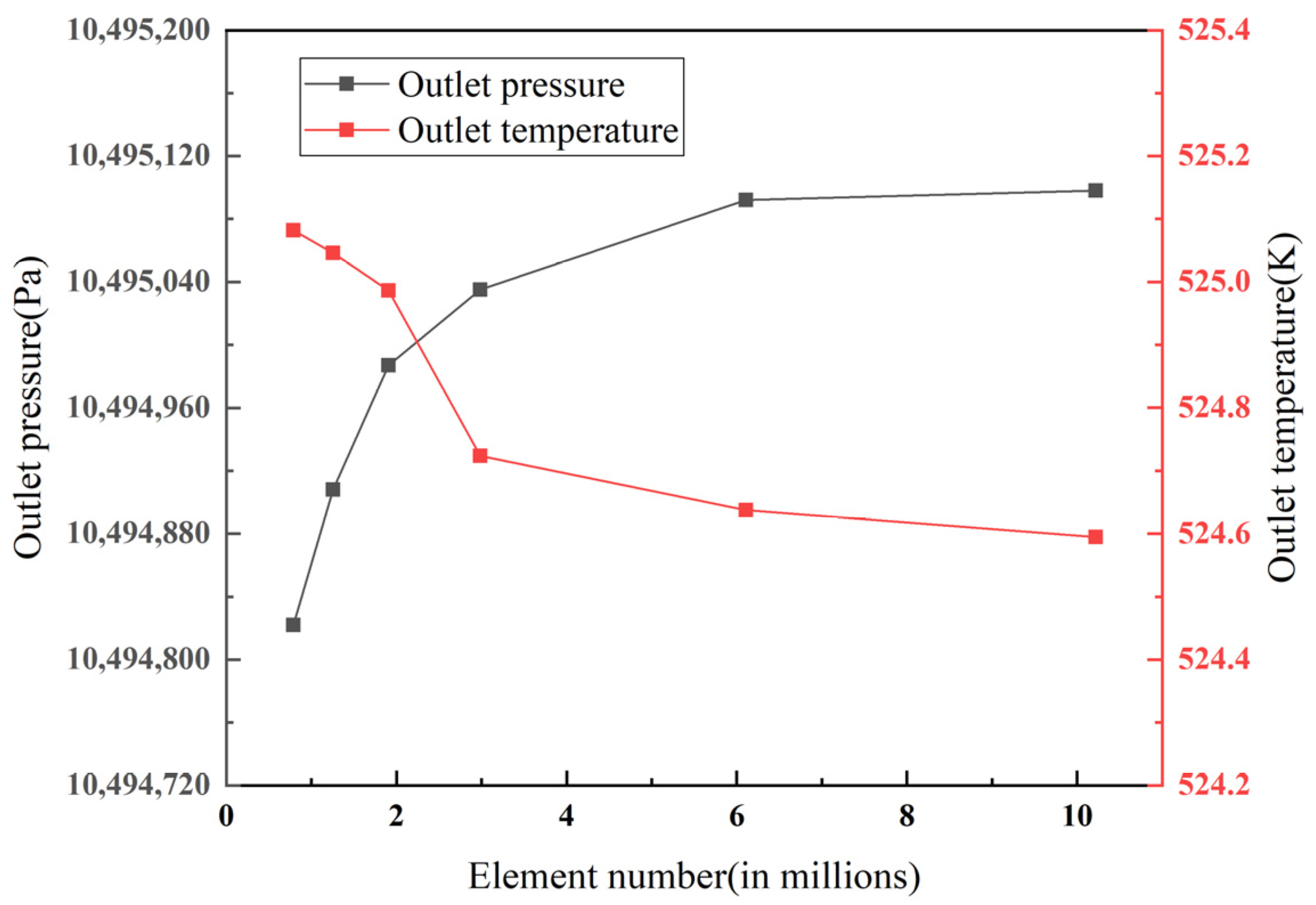
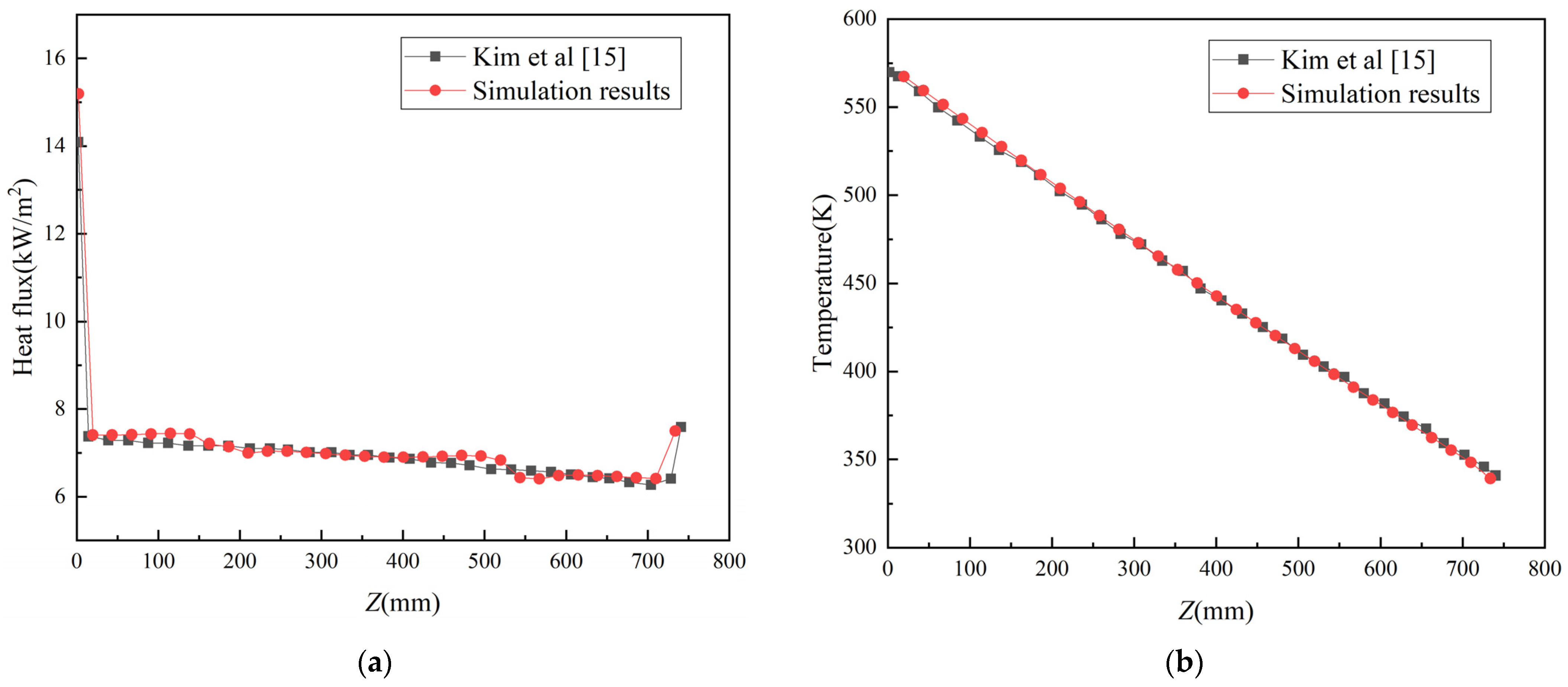


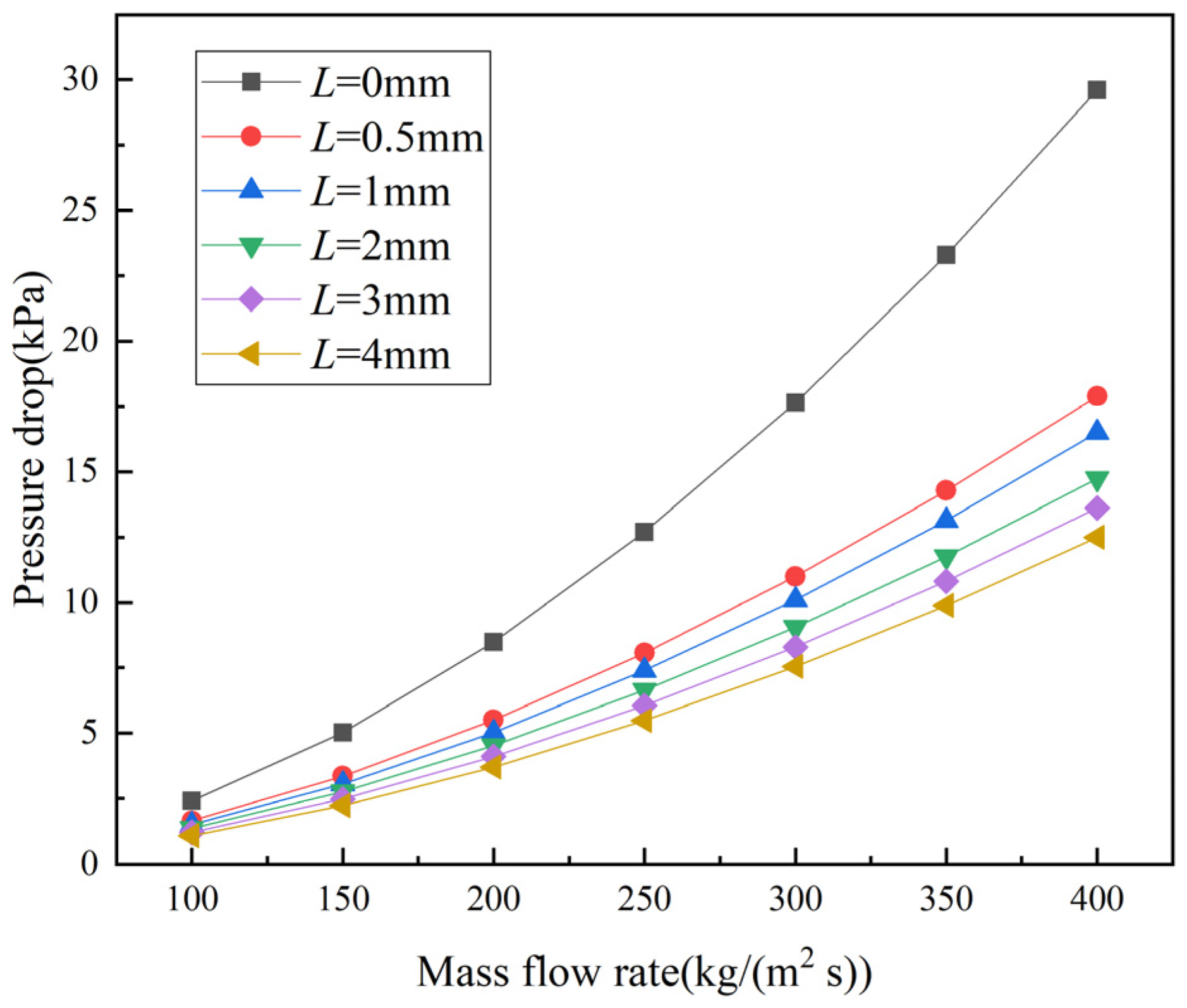
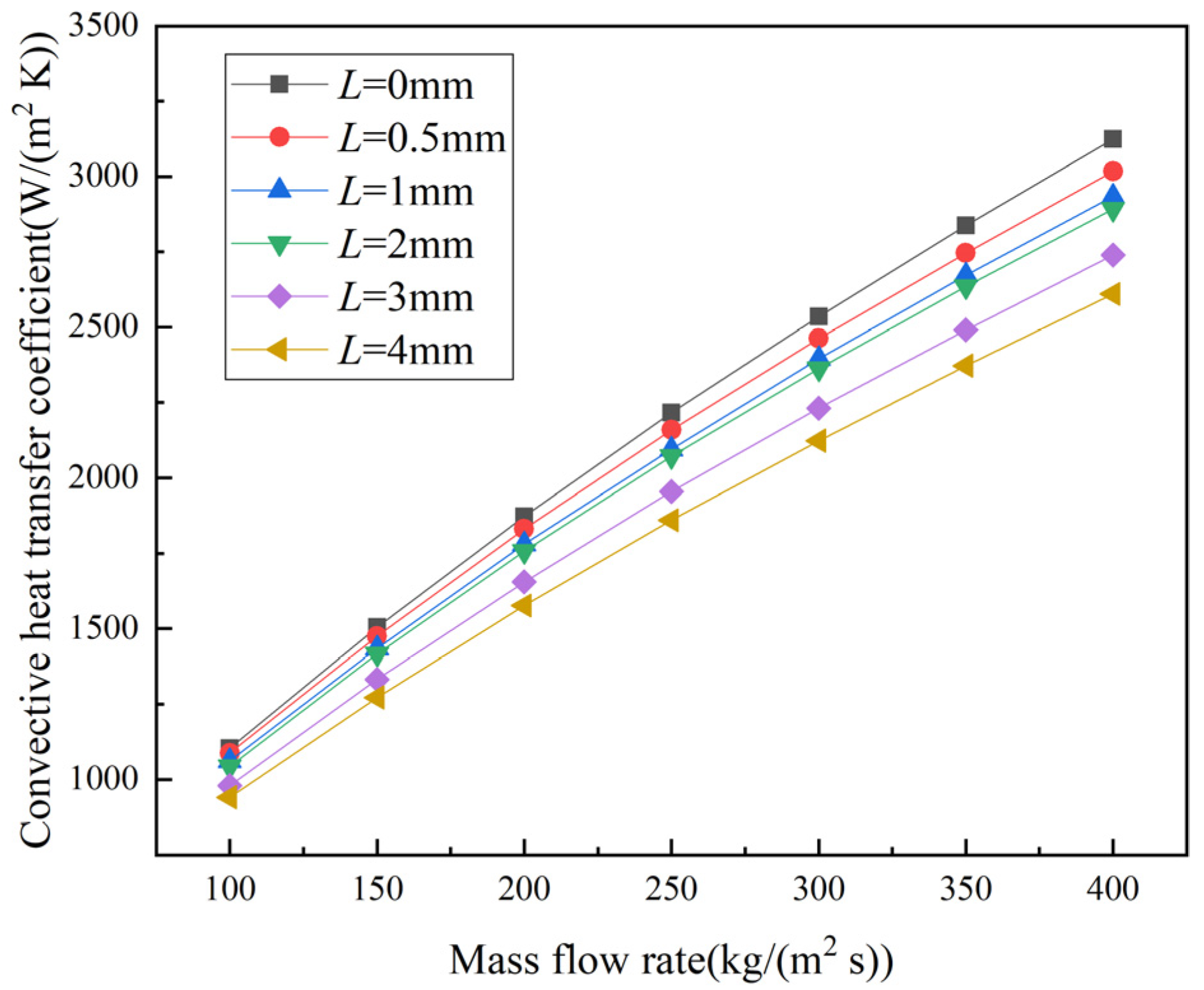
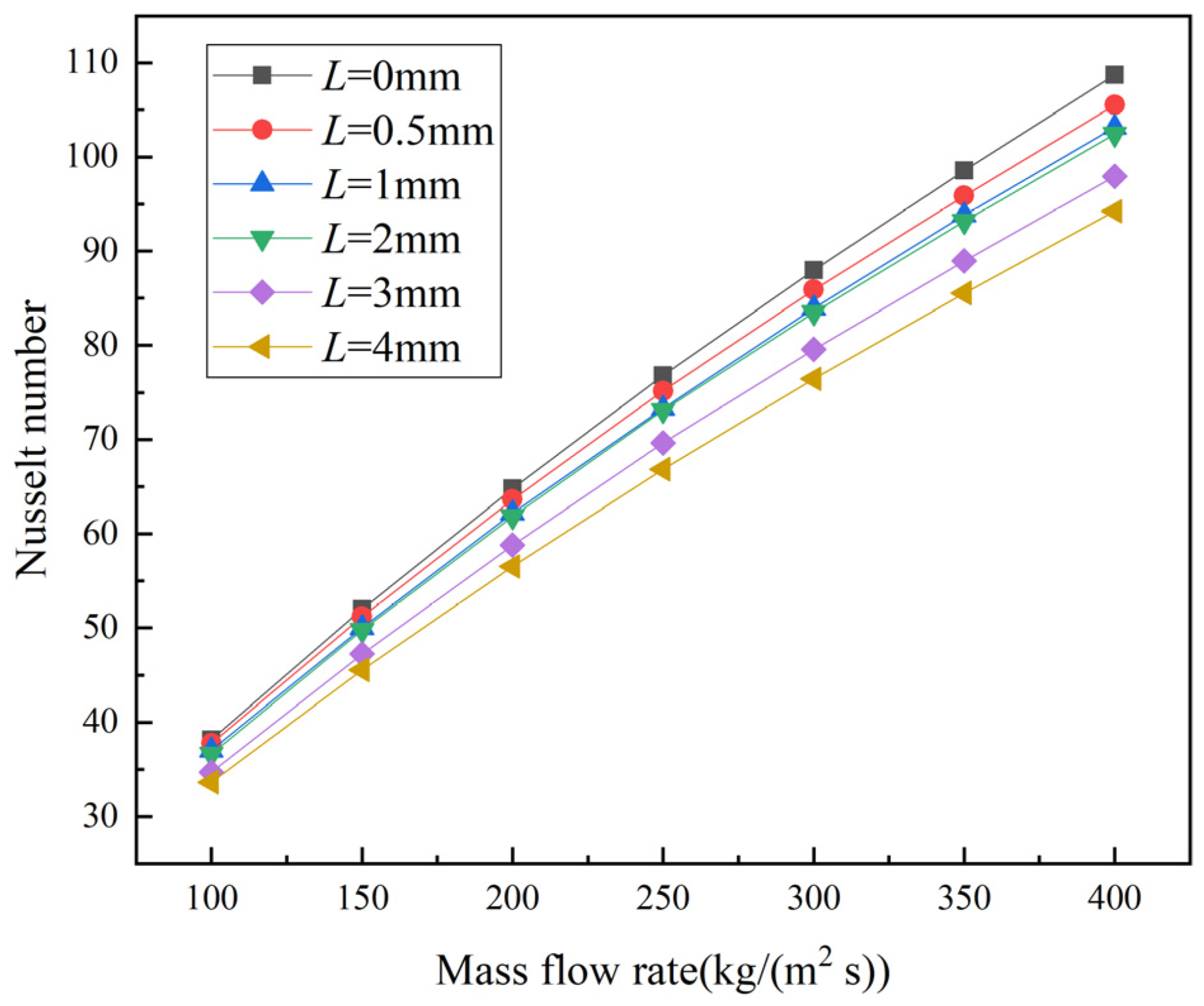



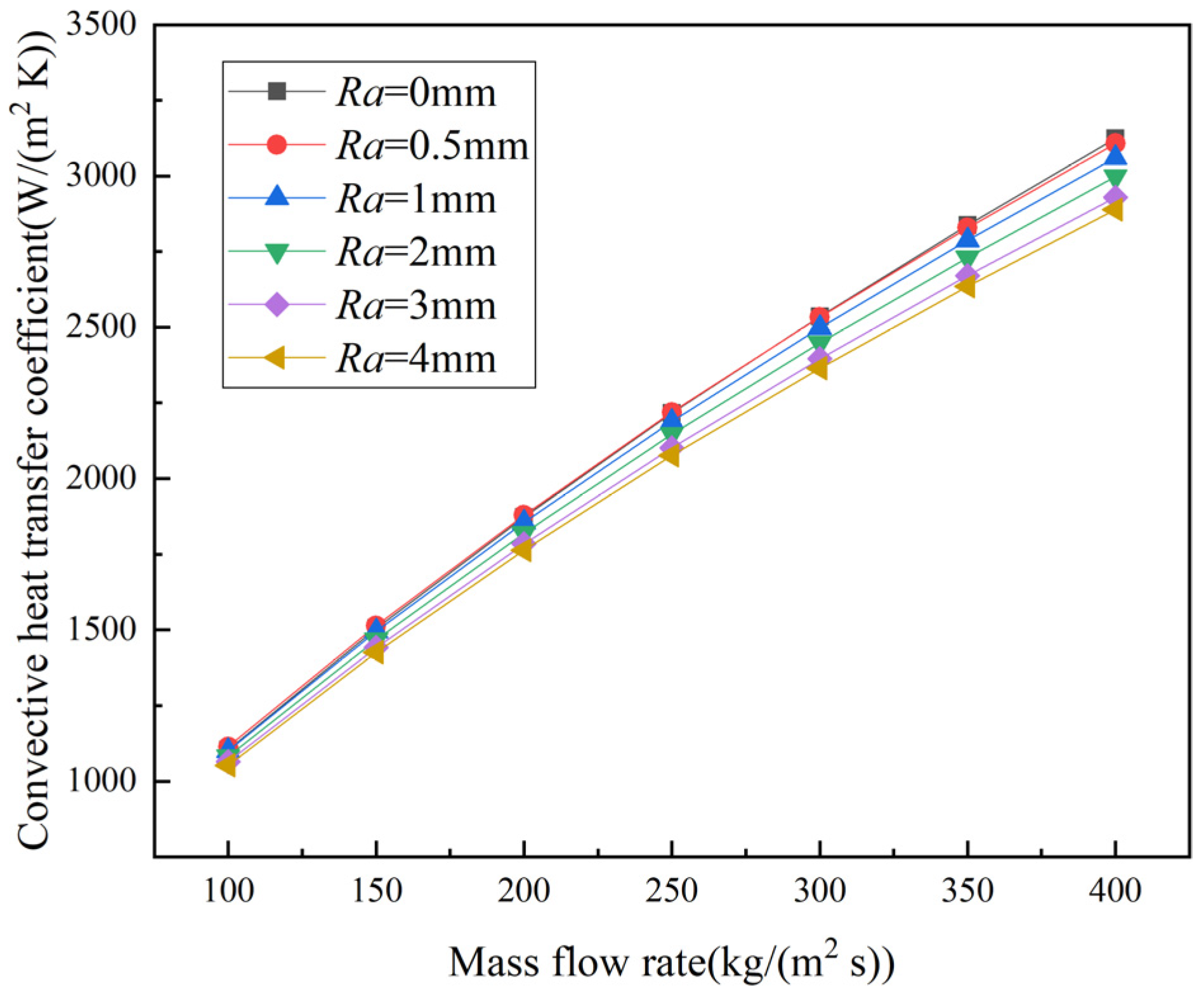
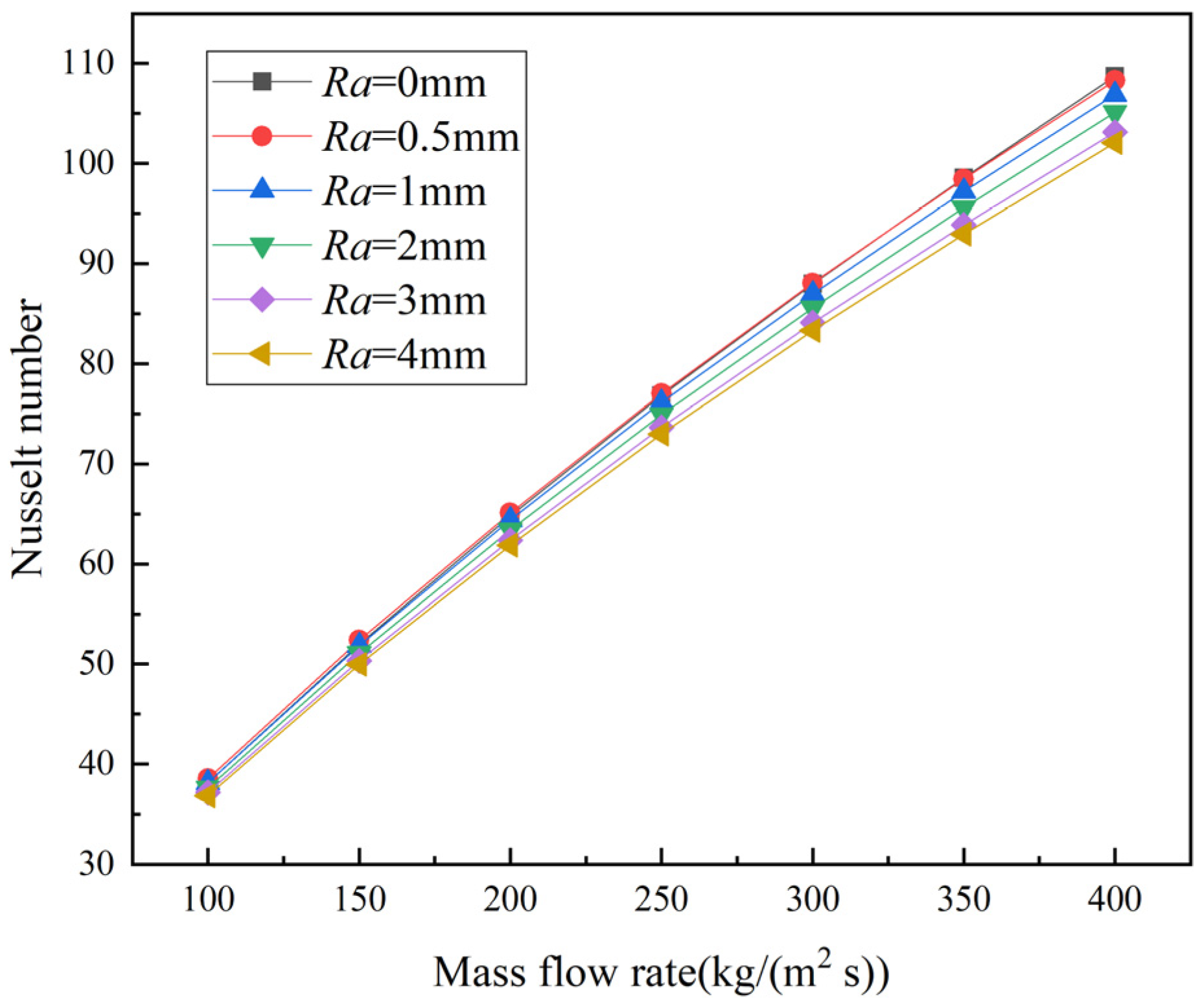

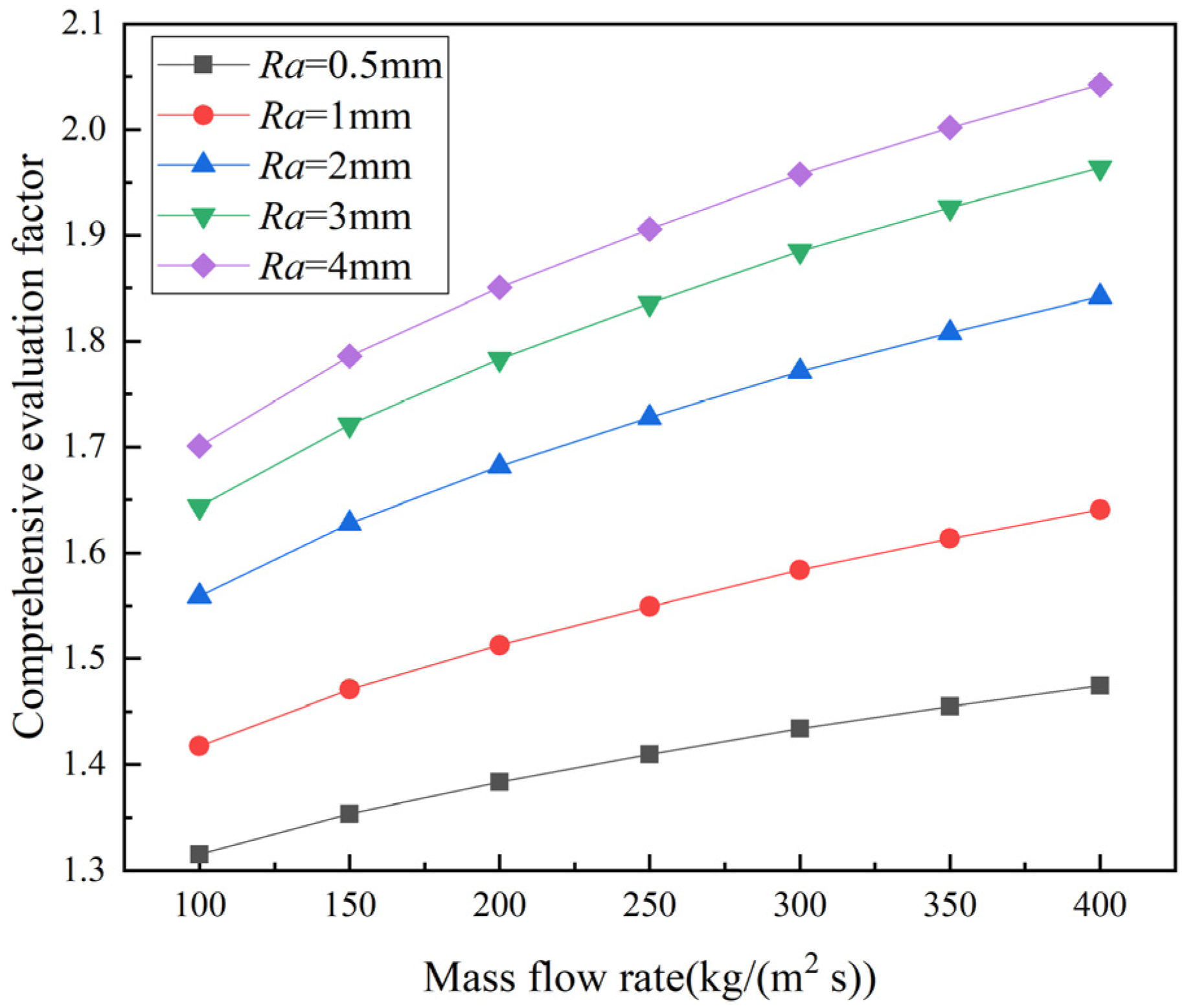

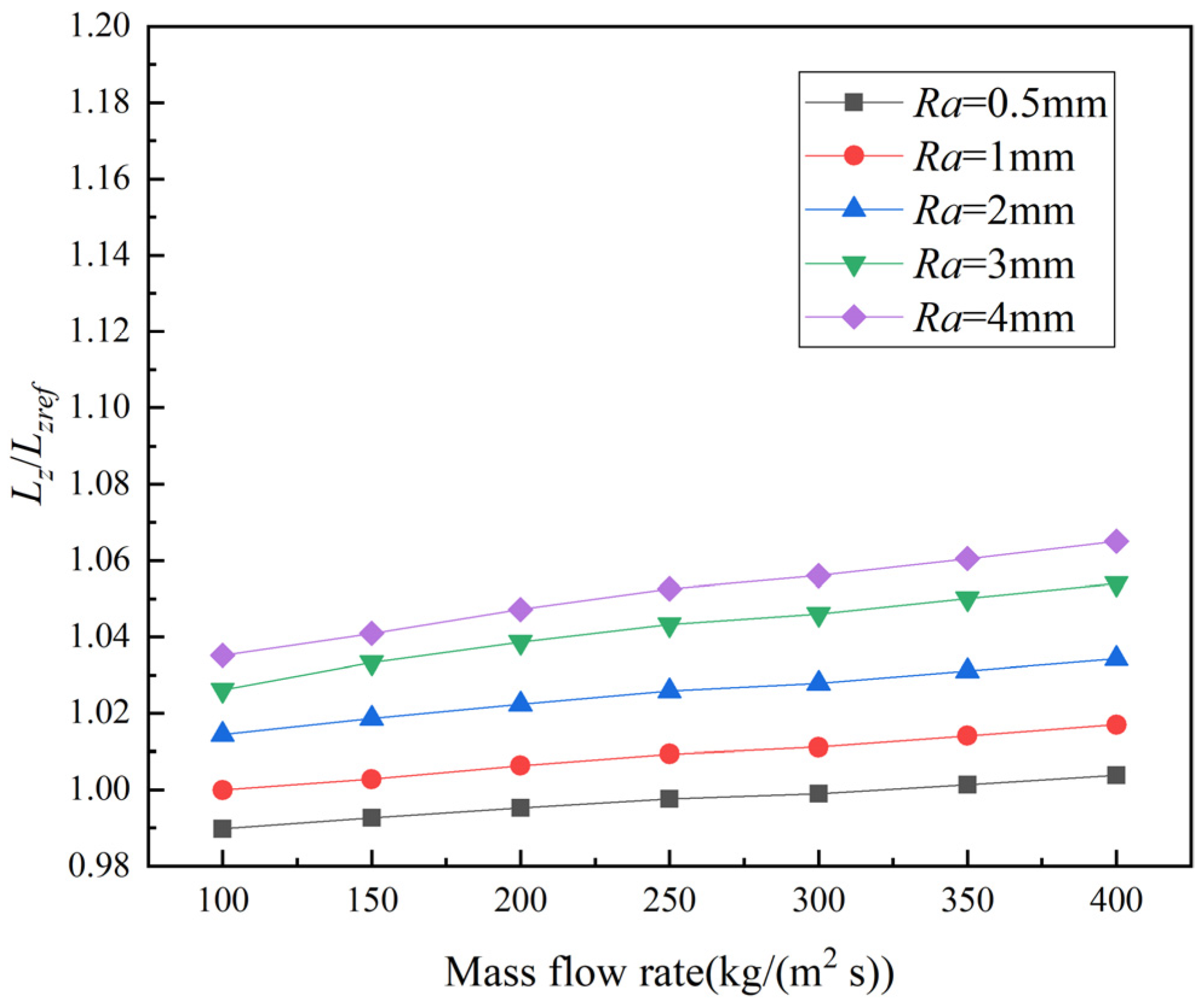
| Working Condition | Polynomials |
|---|---|
| 350–600 K (10.5 MPa) | |
| 350–600 K (3.2 MPa) | |
Publisher’s Note: MDPI stays neutral with regard to jurisdictional claims in published maps and institutional affiliations. |
© 2022 by the authors. Licensee MDPI, Basel, Switzerland. This article is an open access article distributed under the terms and conditions of the Creative Commons Attribution (CC BY) license (https://creativecommons.org/licenses/by/4.0/).
Share and Cite
Wang, B.; Shen, J.; Cheng, J.; Wang, Y. Numerical Improvement Using Flow and Heat Transfer Calculations of the Zigzag Geometry for Carbon Dioxide PCHEs. Energies 2022, 15, 2831. https://doi.org/10.3390/en15082831
Wang B, Shen J, Cheng J, Wang Y. Numerical Improvement Using Flow and Heat Transfer Calculations of the Zigzag Geometry for Carbon Dioxide PCHEs. Energies. 2022; 15(8):2831. https://doi.org/10.3390/en15082831
Chicago/Turabian StyleWang, Bo, Jiafei Shen, Jindong Cheng, and Yaliang Wang. 2022. "Numerical Improvement Using Flow and Heat Transfer Calculations of the Zigzag Geometry for Carbon Dioxide PCHEs" Energies 15, no. 8: 2831. https://doi.org/10.3390/en15082831
APA StyleWang, B., Shen, J., Cheng, J., & Wang, Y. (2022). Numerical Improvement Using Flow and Heat Transfer Calculations of the Zigzag Geometry for Carbon Dioxide PCHEs. Energies, 15(8), 2831. https://doi.org/10.3390/en15082831







